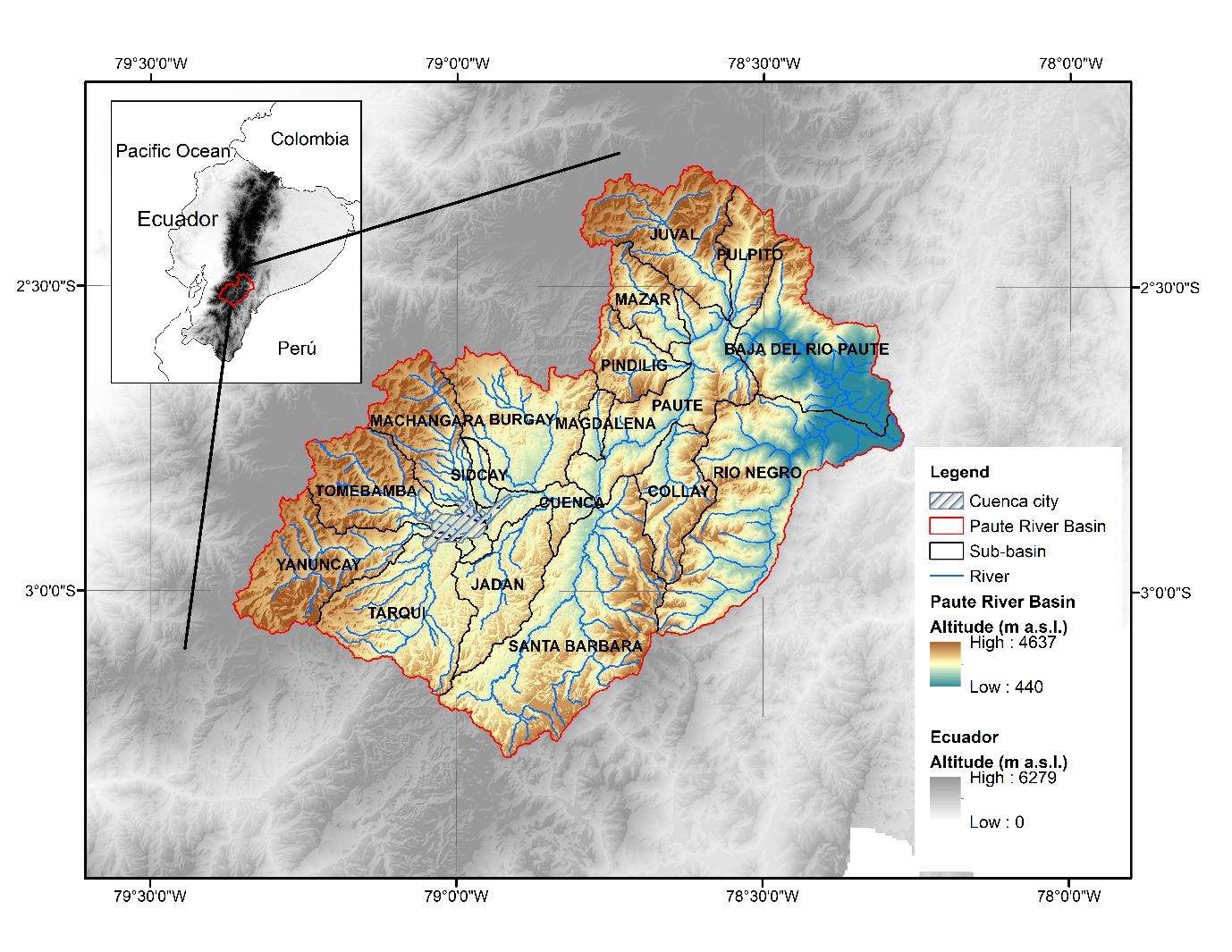Paute River Basin (Ecuador)
The Paute River Basin is located in the Andes of Southern Ecuador. Administratively, the basin is part of the Provinces Azuay, Cañar and Morona Santiago. It is home to 654,333 people including the major urban settlements of Cuenca. With a population of 331,000 (from the 2010 census), the city of Cuenca is the third largest in Ecuador. UNESCO placed the historic center on the World Heritage List in 1999 due to its architectural richness and cultural diversity. The river basin supplies downstream areas with drinking water and water for agricultural production, livestock and fish farming. In addition, its topographical and hydrological characteristics enabled the implementation of hydroelectric projects such as the Paute Integral Hydroelectric Complex, one of the most important hydroelectric projects in the country; it comprises of three dams and four hydroelectric power plants and produces an average of 2,350 megawatts (MW) annually.
 Figure 1: The Paute River Basin: location in Ecuador, subcatchments, topography and hydrological system
Figure 1: The Paute River Basin: location in Ecuador, subcatchments, topography and hydrological system
Four key drivers have been identified that challenge the conservation of the basin and the welfare of people who depend on it:
- Increasing agricultural production and related changes in land use are expanding the agricultural frontier to spaces on steep slopes with low fertility. Moreover, the modernization of agricultural techniques such as ploughing and the use of tractors have changed the conditions of land and the balance of environment over time. According to the Basin Association (Unidad de Manejo para la Cuenca del Río Paute (UMACPA, 1995)), erosion processes with serious environmental and social consequences occur in 37% of the Paute Basin.
- Population growth has gradually led to a predominance of urban over rural population, generating new demands for services such as drinking water, wastewater management, solid waste management, communication routes and more. Furthermore, the rapid population growth has promoted extractive activities for construction of services and industrial production.
- Irrigation efficiency is low due to a lack of technical development. The majority of these irrigation systems were built more than 50 years ago.
- Finally, according to the IPCC (2013), longer dry periods in Central America and other tropical regions are expected, creating a requirement for water management strategies and climate change adaptation policies (Célleri et al., 2010; Buytaert and De Bièvre, 2012).
News
The Tropiseca project is a DAAD funded academic network focusing on research and education related to tropical drought and hydrology in Central and South America. Our research deals with tropical drought risk assessment and drought characterization in the region and particularly in our case study basins: the Tempisque Basin, Costa Rica; Magdalena Basin, Colombia and the Paute Basin in Ecuador. In addition, we work on joint Learning Units and the curriculum of the MSc program "Integrated Water Resources Management for Latin America and the Caribbean (IWRM-LAC)" to be established at the Department of Geography, University of Costa Rica (UCR), to be inaugurated in August 2019.
Contact
Rolando Celleri: This email address is being protected from spambots. You need JavaScript enabled to view it.
Alex Aviles:
Adrian Sucozhañay: This email address is being protected from spambots. You need JavaScript enabled to view it.


